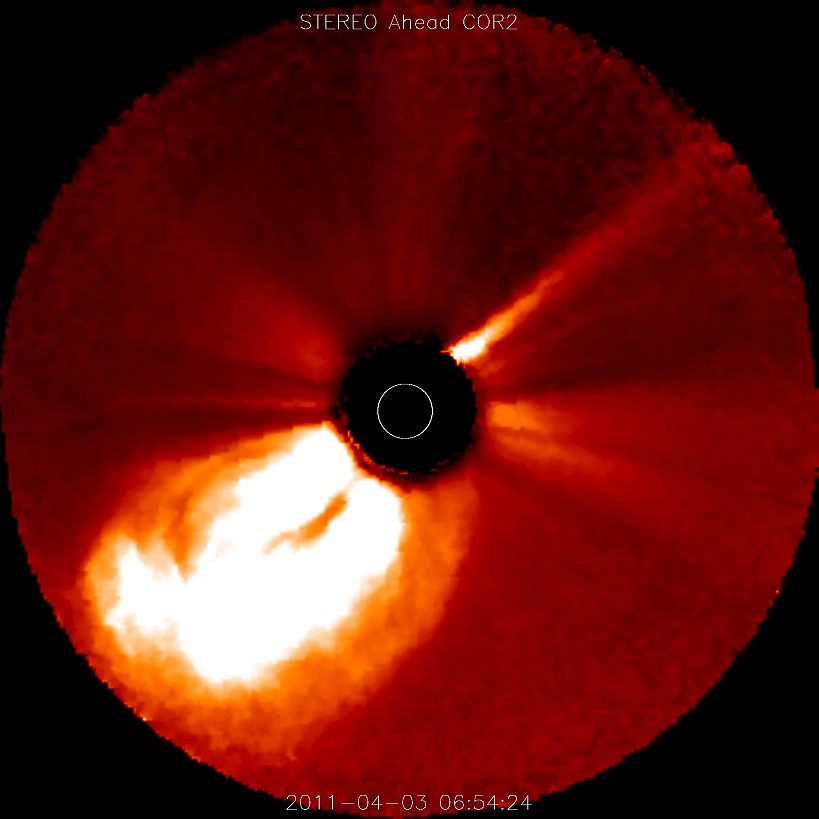While not nearly as large as last weekend’s event, a coronal mass ejection (CME) occurred today and the ejecta appears to be earthbound. According to government simulations, a portion of the CME wavefront is expected to hit our planet on Sunday, April 10, 2011, around 10:40AM Central time.
According to data from the same site, the last time the earth was struck with CME ejecta was March 11, the date of the destructive, magnitude 9.0 Japanese earthquake. Additionally, the 8.8 Chilean earthquake that occurred about a year earlier was predicted based upon a CME that had preceded it
There are formal studies supporting the notion that the sun’s weather is linked to earthquakes. For instance, an investigation of 16 years of seismic and solar activity claims that all 682 earthquakes of magnitude 4 and greater that occurred during this time were preceded by solar flares. However, the study also admits that not all solar flares resulted in earthquakes. It is widely believed that solar flares and CMEs are closely linked, with the former triggering the latter.
We present the study of 682 earthquakes of ¡Ý4.0 magnitude observed during January 1991 to January 2007 in the light of solar flares observed by GOES and SOXS missions in order to explore the possibility of any association between solar flares and earthquakes. Our investigation preliminarily shows that each earthquake under study was preceded by a solar flare of GOES importance B to X class by 10-100 hrs. However, each flare was not found followed by earthquake of magnitude ¡Ý4.0. We classified the earthquake events with respect to their magnitude and further attempted to look for their correlation with GOES importance class and delay time. We found that with the increasing importance of flares the delay in the onset of earthquake reduces. The critical X-ray intensity of the flare to be associated with earthquake is found to be ~10-6 Watts/m2. On the other hand no clear evidence could be established that higher importance flares precede high magnitude earthquakes. Our detailed study of 50 earthquakes associated with solar flares observed by SOXS mission and other wavebands revealed many interesting results such as the location of the flare on the Sun and the delay time in the earthquake and its magnitude. We propose a model explaining the charged particles accelerated during the solar flare and released in the space that undergone further acceleration by interplanetary shocks and produce the ring current in the earth’s magnetosphere, which may enhance the process of tectonics plates motion abruptly at fault zones. It is further proposed that such sudden enhancement in the process of tectonic motion of plates in fault zones may increase abruptly the heat gradients on spatial (dT/dx) and temporal (dT/dt) scales responsible for earthquakes.
